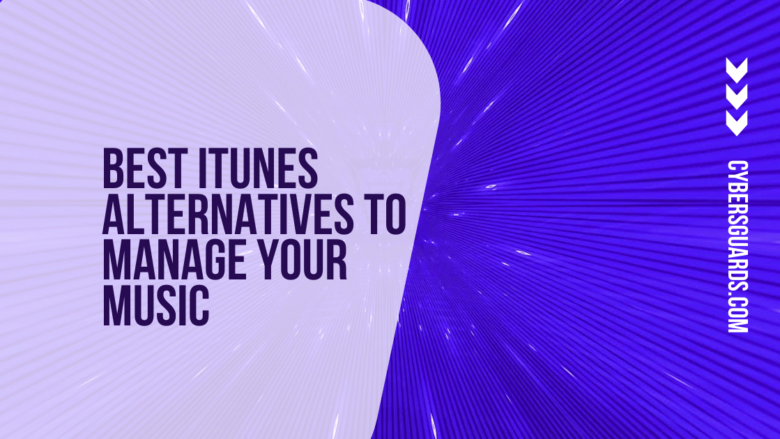Apple’s iTunes revolutionized the way we listen to music, allowing us to collect and upload our favourite tracks to MP3 devices, create playlists, and more. Not only that, but iTunes also offered a plethora of entertainment alternatives that set it apart from the competition.
With MacOS Catalina, Apple pulled down iTunes after nearly two decades, replacing it with Music, TV, and Podcasts apps.
This adjustment was made to streamline the user experience in keeping with current content consumption habits. However, iTunes has a number of flaws, ranging from erratic backup functionality to long syncing times and compatibility issues, prompting many customers to seek out iTunes alternatives.
Alternatives to iTunes
You don’t have to use Apple’s software to manage and transfer your music to your iOS device, thankfully. We’ve compiled a list of the finest iTunes alternatives for you to consider.
1. MusicBee
MusicBee is a fantastic alternative to iTunes, with a user-friendly design and a plethora of capabilities, including some that are particularly handy for the web.
The music manager features an equalisation and DSP effects for fine-tuning sound, as well as gapless playback so you may listen to your music without interruption.
You may also customize MusicBee with attractive skins, and you can create your own or get more skins from the add-on section.
Web radio stations, podcasts, and SoundCloud integration are all supported by the software, allowing you to listen to whatever music you desire.
You may also use your device as a jukebox to play music at any time. It allows you to manage your collection with auto-tagging and create or discover playlists based on your tastes with the Auto-DJ feature.
MusicBee is a Windows application that syncs Groove Music, audio books, playlists, and podcasts.
2. MediaMonkey
If you have a large digital music collection, MediaMonkey can help you organize it. Non-Apple MP3 players, iOS devices, and portable media players are all compatible with the music organizer and audio converter.
The basic (free) version includes various handy tools for adding album art, tagging music files, ripping CDs, and burning discs. Different audio file types can also be converted.
You may handle everything from 100 tracks to 100,000 audio or video files and playlists in your music library. You may also use MediaMonkey to organize, browse, and search your collection by artist, genre, rating, year, and other criteria.
An Auto-DJ feature is featured, which allows you to build any DJ party mix, whether informal or professional, based on your tastes.
If you enjoy listening to podcasts, you may use MediaMonkey’s built-in Podcatcher to download audio files, or you can utilize the web downloader to download files from websites.
Most Android and iOS mobile devices, as well as other portable audio/video devices, can sync with MediaMonkey.
Use MediaMonkey’s visualization plugins to visualize your music with funky effects and personalize with skins and other add-ons if you want to immerse yourself in your music.
3. Vox MP3 & FLAC Music Player
If you’re a Mac user looking for a non-Apple Music iTunes alternative, consider the Vox MP3 and FLAC music player programme. You can listen to music from a variety of sources, including your old iTunes library, and you can also appreciate its slick UI and ability to play a range of audio formats.
The software supports Hi-Res audio and scrobbling from YouTube, SoundCloud, and Last.FM.
You get support for internet radio and access to over 30,000 radio stations with the Vox Premium player service, as well as support for Sonos wireless speaker systems and unlimited music cloud storage.
Gapless playback, CarPlay compatibility, a parametric equalisation with 30 presets, and the option to transmit music via AirPlay are all included.
4. VLC Media Player
VLC media player is a free multimedia music player with a simple interface and a minimalist appearance.
The open-source player supports a wide range of audio and video file formats, making it simple to use on your Windows PC, Mac, Android, or iOS device. If you have an album or video in a rarely supported format that won’t play in iTunes or QuickTime, VLC can handle it.
VLC is a multimedia player that can generate playlists, stream music, and play Blu-ray discs. Furthermore, when using online channel streaming services, you can enjoy an ad-free experience if you’re an internet streamer.
5. Amarok
Amarok is one of the finest iTunes replacements since it works with Windows, Linux, macOS, and Unix operating systems.
You may connect your existing music library to your smartphone, use integrated Web services to discover new music, and access services like Last.fm, Magnatune, and Jamendo through the player’s feature-rich interface. Other integrated Web services, such as OPML Podcast Directory and Librivox for streaming audiobooks, provide further capabilities.
You may access music directly from anywhere using Amarok’s sophisticated API, as well as download and upload to MP3 tunes Locker and connect to the Ampache service remotely to browse and listen media files.
Amarok makes it simple to create playlists because they are automatically updated. The player also allows you to add extra information to your music files and organise your collection by utilising tags, sorting, and renaming.
Amarok’s biggest flaws are its complex download page and lacklustre user interface when compared to the other iTunes competitors on this list.
6. Fidelia
Fidelia is a high-end audio player with a stylish UI and simple controls that appeal to the discerning music listener.
High-definition audio, a configurable music player experience, AirPlay support for external speakers, and 64-bit Audio Unit plugin support are all included in the player.
Fidelia is also available as an iOS app, which allows you to use your iPhone or iPod touch as a remote control for the Fidelia player. The iOS software, on the other hand, must be purchased separately before being downloaded to your device.
Fidelia not only makes it simple to import your music library from iTunes, but it also supports a number of high-quality formats that aren’t available in iTunes, such as FLAC.
You may also browse your playlists and collection from as far as your wireless network allows, adjust playing level, and navigate within or between music files. The biggest disadvantage is that Fidelia does not allow DRM-protected AAC files.
7. Winamp
Winamp is a full-featured, vintage media player that collects all of your music, podcasts, and streaming services into one convenient location.
The player allows DRM-free media to be synced to iPods and other devices, making it a great alternative to iTunes. Android users, on the other hand, may use Winamp on their devices and seamlessly transfer their iTunes libraries.
Winamp is completely free to use and includes all of the features and tools you’ll need to manage and enjoy your iTunes library.
A huge number of third-party extensions and plugins, as well as an elegant, easy-to-navigate interface, are among these advantages. You may also listen to a variety of online radio stations, rip and convert music from DRM-free CDs, and search the web for downloaded MP3 media files to add to your library.
Winamp also has synchronisation capabilities so you can control your device’s media wirelessly, as well as customization and skin options so you can make it look exactly as you want it to.
Organize and Listen to Your Music
While there are many more music media players and managers than we could possibly cover in a single post, these seven iTunes alternatives are an excellent place to start.
The media players are fully compatible with a variety of operating systems and allow you to sync your music collection across several devices so you may listen to it whenever and wherever you choose.











FIND US ON SOCIALS